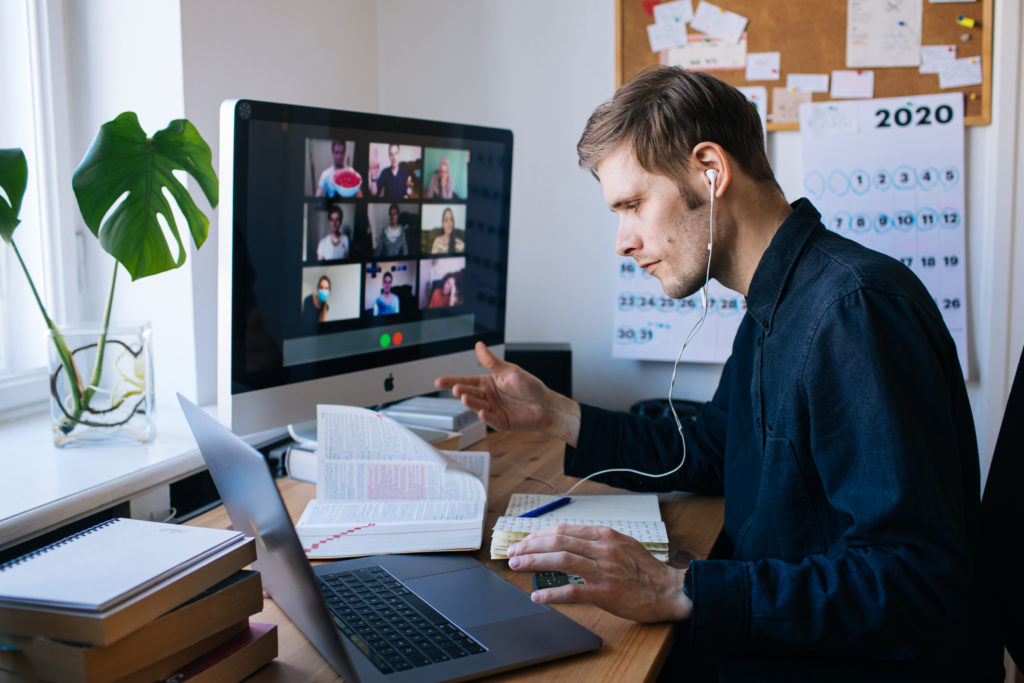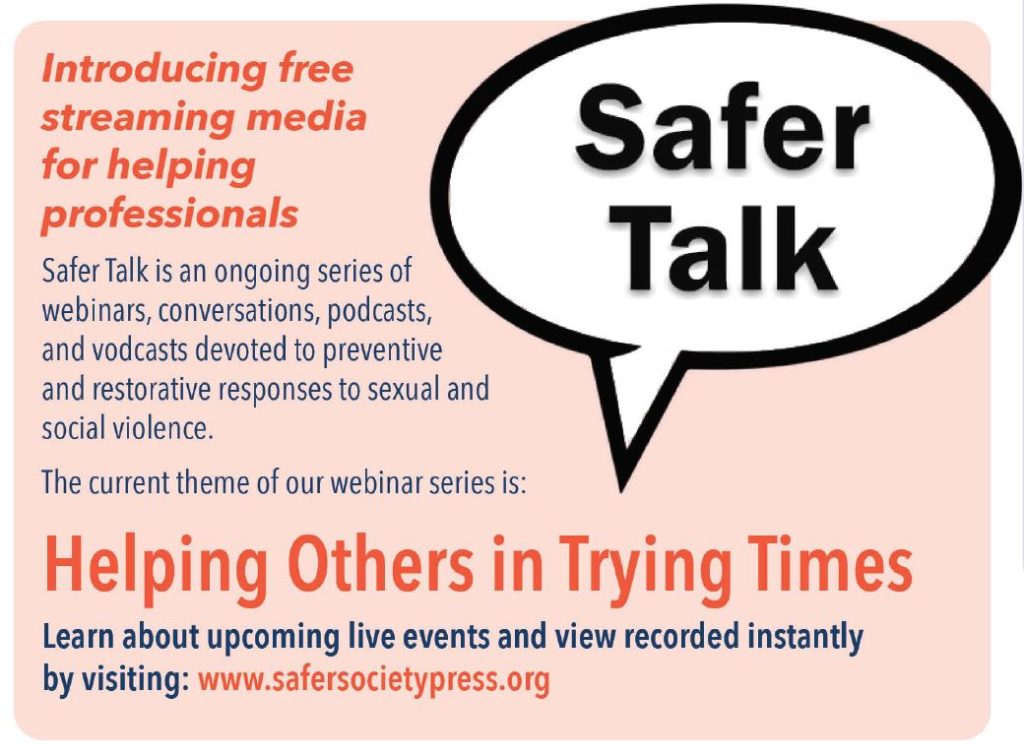Professionals at the Front Lines of COVID-19: Complexities and a Return to the Basics
By David S. Prescott, LCSW, LICSW
Colleagues and clients alike are coping with crises on a daily basis. The pandemic is affecting us all; as I write, the subject of physically returning to school is the topic of heated debate. Five months into what is clearly a long journey, the emphasis is shifting from how we are going to live through the pandemic to how we are going to live with it for the foreseeable future. The effects have been devastating in many ways. What’s happening?

An early adaptation to changing times was, appropriately enough, in the area of legal and ethical telehealth practice. The American Psychological Association offered information and resources, and soon numerous states, provinces, and other jurisdictions did as well. This has become a vital consideration, given that rules regarding telehealth can vary by location. Beyond jurisdiction, questions arise about financial reimbursement rates and practices. COVID-19 has forced us to re-examine virtually every aspect of the structures underlying our practice. If we have learned anything, it’s that we all need to check local sources and not rely on what we hear from colleagues in other regions.
In one example of how everyone’s situation is different, a day treatment program in one small New England state serving adolescents, primarily from the smaller state next door, faced a complicated situation when the students had to shelter in place. A therapist licensed in the first state but not the other could no longer provide services to much of her caseload. In the eyes of the second state’s licensing authorities, she would technically be practicing without a license. Although many restrictions have eased, it is still vital that all professionals be clear about the various agency policies and laws that affect them.

People working in some settings have provided treatment in notoriously scant environments. One inpatient program has a counselor on a videoconference link facilitating group therapy, while a front-line staff member supports the process from within the room. Readers can imagine, or are experiencing, the circumstances of counselors literally not being allowed to enter their own programs due to social distancing rules. In some cases, the political aspects that many associate with the pandemic are also causing problems with staff cohesion at a time when it is critical to the health of the program that all staff members are singing from the same songsheet. For example, the staff of some programs have been outspoken (outside the presence of their clients) that they don’t support the policies that state governments have imposed. The net result is new forms of tension just below the surface.

These challenges have not been limited to inpatient programs. Community-based counselors have often found it impossible to meet social distancing guidelines in the confines of chronically small offices. Some have tried unsuccessfully to get out of lease arrangements, which sometimes creates further problems for clients and professionals alike.
COVID Forces Us to Change the Way We Communicate
Then we have our own responses to videoconferencing. Many professionals have difficulty acclimating to videoconferencing. In some cases, it can be as simple as a client or colleague’s cat jumping onto the keyboard, appearing to “moon” the camera. During one large staff meeting, an otherwise charismatic director spent most of her time asking participants to please mute their microphones. Too frazzled to read the instructions from her assistant in the “chat” feature, she was unaware that she could have muted the participants (particularly those whose dogs were barking or who were paying no attention and talking to others) from her own computer. Distractions abound. Virtually anyone participating in a videoconference has had the experience of looking at others’ offices and having their own observed in return. Many have quipped that videoconferencing is an excellent way to study others’ bookshelves.
At a more nuanced level, adapting to Zoom and similar online meeting rooms has required considering what backgrounds are acceptable for others to see. Many among us have turned corners of our offices into virtual television studios, while client responses can be unpredictable. One of my own clients took note of the Celtic cross on a decorative Irish drum on my home office wall, a souvenir from a conference. It led to a discussion in which the client wandered into a detailed conversation about the cross and its meanings. While many of us have mastered the art of professional boundaries, we now face increasing challenges considering the minutiae of our workspaces.
Interestingly, the opposite can also be true. Platforms such as Zoom enable the user to set up a “virtual background,” making it look as though they are on a tropical beach, off-planet, or in the sky with the Aurora Borealis. Given the traumatic backgrounds of at-risk kids, it’s worth thinking about whether some fabricated background we think is cool might instead provide fodder for misunderstanding or mistrust. After the novelty wears off, do clients wonder what we might be hiding or whether this signals a lack of genuineness on our parts? The full impact of our adaptation remains to be seen.


Clients seem to be adapting. Where some professionals viewed shelter-in-place orders as short term and couldn’t imagine providing intensive services via video, their clients are rising to the occasion. One client reportedly told his counselor, “How about you write me a letter if there’s something you want to say, and we’ll talk when you can come back.” Within two weeks, they had both worked through the transition to video, and treatment was back on track.
Of course, each of the above examples involved situations where phone calls and videoconferencing were possible. As many of us have discovered, we can’t assume our clients are able to use or have access to the available technologies.
COVID-Caused Disruptions to the Flow of Critical Information About Child Abuse
The full effects of the pandemic on abuse rates may not be known for years. In a recent interview for Safer Society, Jenny Coleman, the Director of Stop It Now!, an organization dedicated to preventing child sexual abuse, noted how calls to their helpline and to child abuse hotlines had not increased, almost certainly because the usual people who would learn about suspected abuse (for example, teachers and childcare workers) are not currently in a position to observe and take action. Psychotherapy researcher Scott Miller, who interacts with a massive database of up-to-the-moment self-reported client wellbeing information, also stated in a recent interview for Safer Society that clients currently in treatment are not signaling an increase in overall distress at this time. However, the nature of these reports, and the fact that many people who are experiencing distress are not in treatment, suggest that global mental health will doubtless suffer in the coming months and years. It is still simply too early to know what the trends will be.
The Battle to Retain the Basic Elements of “What Works” — Connection and Communication
Ultimately, many professionals are returning to two of the basic elements of “what works” in treatment, education, and helping conversations: connection and communication. In browsing social media and listening to the accounts of numerous professionals, a recurring trend is one of concern for the wellbeing of others and attempts to bridge the gaps between professional and client, a gap widened by the pandemic. Our ability to connect with clients simply through conversation and communication may well be the most important lesson that we must (re-)learn through the pandemic era.
What’s next for professionals helping children and teens? Much remains unknown. Some things are certain: Our services will be needed to address the challenges of returning to whatever new normal unfolds across the coming months and years. Above all, we will need to take exquisite care of ourselves along the way. As the saying goes, alone we can travel faster, but together we will travel farther.

David S. Prescott, LICSW
A mental health practitioner of 36 years, David is the Editor of Safer Society Press. He is the author and editor of 20 books in the areas of understanding and improving services to at-risk clients. He is best known for his work in the areas of understanding, assessing, and treating sexual violence and trauma. David is the recipient of the 2014 Distinguished Contribution award from the Association for the Treatment of Sexual Abusers and the 2018 recipient of the National Adolescent Perpetration Network’s C. Henry Kempe Lifetime Achievement award. He currently trains and lectures around the world.


